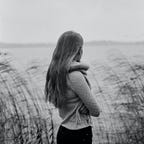The Blood-Stained Side Of The Sun
Half of a Yellow Sun by Chimamanda Ngozi Adichie
This is the fifth episode of a series of personal book reviews. Please follow me if you enjoyed it and want to read my next stories, feel free to leave your own comments, or contact me if you would like me to write a personal analysis of one of your favorite literary pieces !
Disclaimer : All opinions expressed here are my own and do not necessarily reflect a general truth nor the opinions of anyone else.
Content : 10/10 |
There are some things that are so unforgivable that they make other things easily forgivable.
This book is the story of dozens of different trajectories and life outcomes, improbably united by a dramatic course of events. Ms. Adichie tells, with incredible talent, the vivid story of many individuals — and it becomes the story of a bloody decade, of the Igbo people, of the Biafran nation, and in a broader sense of the birth of Nigeria freeing itself from the British yoke.
It is a very dense read, the whole world in a single book, and yet one cannot let it down. Ms. Adichie just says everything. She says everything about life in Nigeria, about the ethnicities, the languages, the traditions, the cultures that patchwork this multifacet nation. She says everything about the broken state in which British colonialism has left Nigeria, which would not even have become a single country had it be for African aspirations. She says everything about the horrors of war, about hunger, about hate, about survival, about indifference.
Finally, this is a crucial read in terms ofhuman psychology. Once again, everything is here : treason, love, deception, tiredness, despair, hope.
Form : 9/10 |
Ms. Adichie’s style is very living and picturesque : it’s just like having everything under your eyes. Her book is not deeply literary in so far as she prefers factual assertions to poetic dwellings, and yet it is extremely pleasant to read. She has much more of Steinbeck than of Proust, and her style is totally appropriate to the epic journey she depicts.
Emotion : 9/10 |
It is hard not to feel deeply shaken by the horrors of war thoroughly depicted throughout the novel. Some images, some phrases lingered in my mind for days and weeks after closing the book, as if I had been robbed of a bit of my own humanity just by knowing of these crimes.
Like watching violent war movies, this book leaves a lingering sense of disgust, of despair, of shame of being human. Sometimes I surprised myself wondering : had I done any better ? I like the fact that, despite a very fleur-bleue beginning making me wonder if I would even make it to the end of the book, the characters become more and more real, human, weaked and flawed when you dive deeper in their story.
Global : 10/10 |
The few lines summary on the back cover really discouraged me of reading this book. I find that it is exceptionally badly phrased, it presents the work as a stinkingly romantic teenager novel. So, in the first place, I only bought the book because of the prizes it had won (13 years after winning the Women’s Prize for Fiction, it has been voted the “winner of winners” of the literary award), and because I had really liked my first read of Ms. Adichie, Americanah.
I have not been disappointed. I had loved Americanah and Half of a Yellow Sun is actually even better. My main thought during the time I was reading the book (it was actually a short interval, I found it very hard to put the book down) was that it was just like Hemingway’s The Sun also Rises. Same enigmatic title, same astral reference. Same outline — surreal love story framed in a worn-torn country. Same horror. Same quest at the very boundaries of humanity. In both cases, the works have become symbols of an entire historical timeframe, the emblems of the wars they are situated in.
The book also reminded me strongly of another novel, much shorter, that I had read years before : Small Country by Gaël Faye. The story of a small country, of life as usual, of a people destroyed and anihilated, of the unsufferable normality of death, is very similar, with the maindifference being that Small Country is depicted through the eyes of a child and is autobiographic, whereas Half of a Yellow Sun is focused only on adult characters’ views, and merely fictional (though based on an extensive quality historical research). I hoty recommend these 2 reads to those among you that might have enjoyed this book.
Half of a Yellow Sun more than deserves all the honors and praise it has got so far. It is an absolute must-read for everybody interested in the history of conflicts as a whole, in the construction of African nations in a post-colonization, post WW2 world, or simply in how normal people can be torn away from themselves and from their very humanity by the pressure of events, of a time, of circumstances, by despair, hunger, fright and pain.
